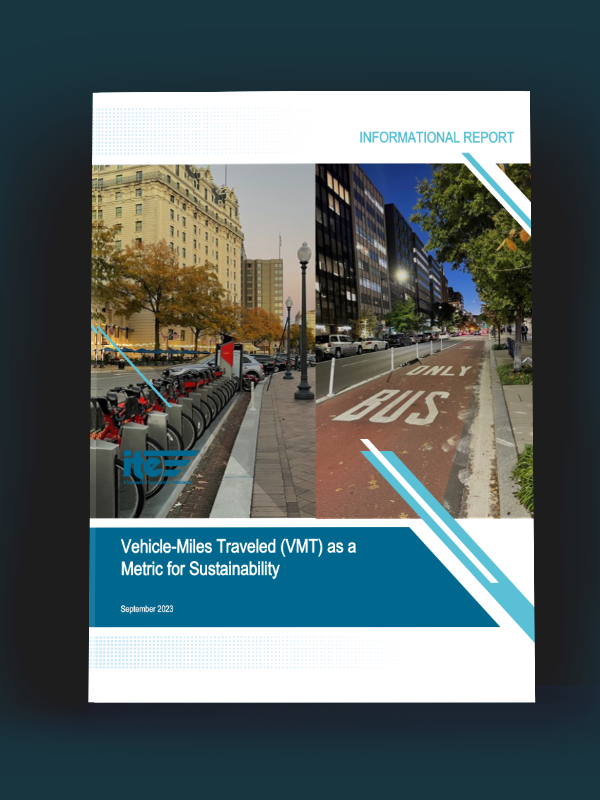Using VMT to Promote Sustainability
Using VMT to Promote Sustainability
As planning strategies evolve from vehicle-centric to a multimodal, accessibility-focused approach, the focus is on moving people efficiently over vehicles. The new paradigm emphasizes sustainable transportation modes and underscores the significance of Vehicle Miles Traveled (VMT) as a crucial metric. VMT reduction benefits traffic flow, infrastructure costs, community well-being, pollution reduction, non-driver accessibility, and public health.
We’re excited to introduce ITE’s new technical brief, Vehicle-Miles Traveled (VMT) as a Metric for Sustainability. This resource, which includes contributions from our nationwide VMT expert Ron Milam, covers the shift from vehicle-based planning to accessibility-based planning, providing insights and case studies for transportation agencies and practitioners striving to enhance equity, safety, environmental sustainability, and community livability.
share this article
Explore More
Bans & The Truck Parking Crisis
Learn about the collaborative efforts underway to ensure 1.4 million commercial truck drivers are granted safe and secure stops along their routes.
How Does VMT Move the Needle on Decarbonization?
Decarbonizing transportation requires more than cleaner vehicles—it also means driving less. This post explores how reducing vehicle miles traveled (VMT) supports climate action goals, what strategies are most effective, and where planners can make the biggest impact.
The Road Less Traveled
Learn about our solutions that provide simple, effective, and scalable options to bridge the gap between expectations and resource constraints in rural transportation planning.




